B0041VYHGW EBOK (76 page)
Authors: David Bordwell,Kristin Thompson

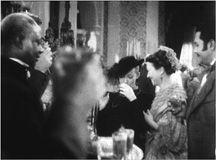
5.86 … when suddenly a huge fist holding a glass appears in the left foreground.
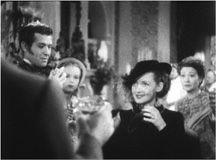
5.87 Julie looks off at its owner and comes forward …
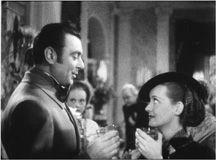
5.88 … and the camera retreats slightly to frame her with the man who toasted her.
More systematically, D. W. Griffith’s
Musketeers of Pig Alley
makes use of sudden intrusions into the frame as a motif developing across the whole film. When a gangster is trying to slip a drug into the heroine’s drink, we are not aware that the Snapper Kid has entered the room until a plume of his cigarette smoke wafts into the frame
(
5.89
).
At the film’s end, when the Snapper Kid receives a payoff, a mysterious hand thrusts into the frame to offer him money
(
5.90
).
Griffith has exploited the surprise latent in our sudden awareness that figures are offscreen.
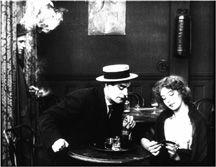
5.89
The Musketeers of Pig Alley.
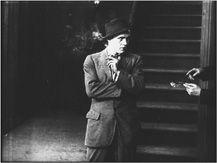
5.90
The Musketeers of Pig Alley.
The use of the fifth zone of offscreen space, that behind the rear plane, is of course common; characters go out a door and are now concealed by a wall or a staircase. Somewhat rarer is the use of the sixth zone—offscreen space behind and near the camera. One lengthy example occurs in Abbas Kiarostami’s
Under the Olive Trees.
The crew is shooting a film scene, and we watch through the lens of the camera. As the tensions between two young actors spoil take after take, the action is repeated many times
(
5.91
).
Eventually, shots begin to show the director and his crew behind the camera
(
5.92
).
After several repetitions, the director walks in from that offscreen space behind the camera and tries to resolve the problem
(
5.93
).
Because of our awareness of the space behind the camera, throughout the many retakes, we remain aware of the crew’s growing frustration. In such ways, a filmmaker can turn the necessary limitations of the frame edge to advantage.

5.91 The actors return to their positions for one of many retakes of a shot for the film-within-a-film in
Under the Olive Trees.
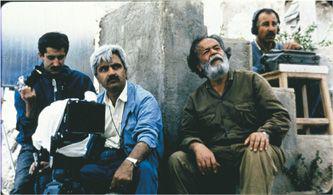
5.92 Finally, a reverse shot reveals the crew behind the camera, trying to figure out what is causing the problem.
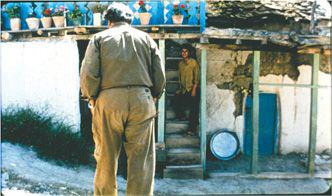
5.93 Eventually, the director walks into camera range and tries to talk the actors into playing their roles as he wants them to.
The frame implies not only space outside itself but also a position from which the material in the image is viewed. Most often, such a position is that of the camera filming the event. Even in an animated film, the shots may be framed as high or low angles, or long shots or close-ups, all of which simply result from the perspective of drawings selected to be photographed.
The frame positions us at some angle looking onto the shot’s mise-enscene. The number of such angles is infinite, since the camera might be placed anywhere. In practice, we typically distinguish three general categories: the straight-on angle, the high angle, and the low angle. The straight-on angle is the most common
(
5.94
).
The high-angle positions us looking down at the material within the frame
(
5.95
).
The low-angle framing positions us as looking up at the framed materials
(
5.96
).

5.94 A straight-on angle in
The Chronicle of Anna Magdalena Bach.
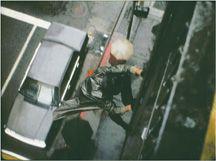
5.95 A high-angle framing from
Se7en.